
Masaki Tamura
출생 : 1939-01-26, Hirosaki, Aomori, Japan
사망 : 2018-05-23
약력
Masaki Tamura (たむら まさき, Tamura Masaki, 26 January 1939 – 23 May 2018) was a Japanese cinematographer.
Born in Aomori Prefecture, Tamura early on worked at Iwanami Productions (Iwanami Eiga), where. as an assistant, he helped photograph documentary films. He became a full-fledged cinematographer working on many of the documentaries of Shinsuke Ogawa. At the same time, he began photographing feature fiction films by directors such as Kazuo Kuroki, Yōichi Higashi, and Toshiya Fujita. He particularly became known for his collaborations with Mitsuo Yanagimachi. After working with many famous directors such as Juzo Itami, Sōgo Ishii, Gō Takamine, Kiyoshi Kurosawa, and Kaizō Hayashi, he began working in the 1990s with a new generation of directors, such as Nobuhiro Suwa, Naomi Kawase, and Makoto Satō. His collaborations with Shinji Aoyama were notable in his final years.
In 1982, he won the Mainichi Film Award for best cinematography for the film Farewell to the Land. The same year, he won the best cinematography award at the Yokohama Film Festival for Farewell to the Land and A Japanese Village - Furuyashikimura.
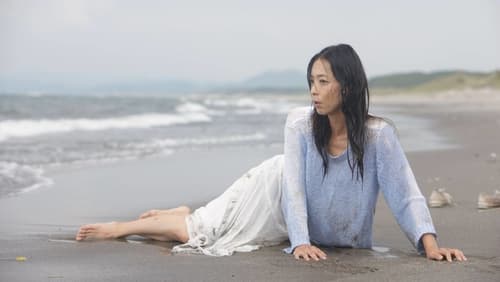
Cinematography
초등학교 교사인 아즈사는 직장에서 밀려나고, 남자친구와 헤어지며 최악의 상황에 몰린다. 하늘에서 들려오는 소리 ‘아모레이 섬에 가서 보물을 찾아라.’ 어릴 때부터 전쟁에 공헌을 세워 공주와 결혼한 개의 신화를 들었던 아즈사는 남방의 섬으로 향하고 사기꾼 혁명가, 히키코모리 가수, 추방된 왕자 등을 만나며 신화적인 모험을 하게 된다.
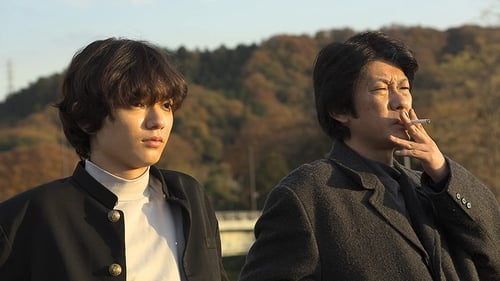
Director of Photography
Saki and Toshi were born and raised at the shabby "Drive in Gamo," located on the side of a road. Their father was a yakuza but he was kicked out of the group. Because of their father, Saki and Toshi were known as being part of the idiot family. Saki in desperation with her life became a troubled kid. She got pregnant and ran away from family. But one day, Saki who suffered from physical violence by her husband, comes back home.

Director
Saki and Toshi were born and raised at the shabby "Drive in Gamo," located on the side of a road. Their father was a yakuza but he was kicked out of the group. Because of their father, Saki and Toshi were known as being part of the idiot family. Saki in desperation with her life became a troubled kid. She got pregnant and ran away from family. But one day, Saki who suffered from physical violence by her husband, comes back home.
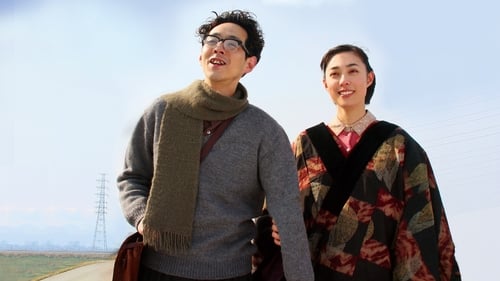
Director of Photography
A woman from rural Japan marries a struggling cartoonist in Tokyo. Their life is difficult before he finds success, but at least they're together.
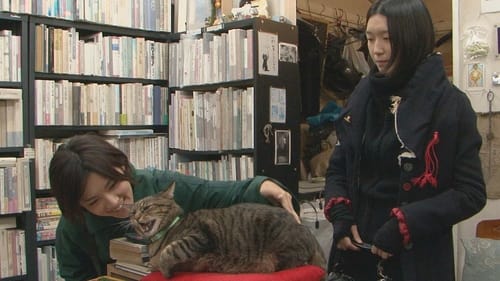
Director of Photography
Haru works at a part-time job for a bookstore. Her dream is to become an illustrator and she also loves cats. One day, after a cat named Chibutomu disappears from the bookstore Haru canvasses the neighbourhood in search of Chibutomu.
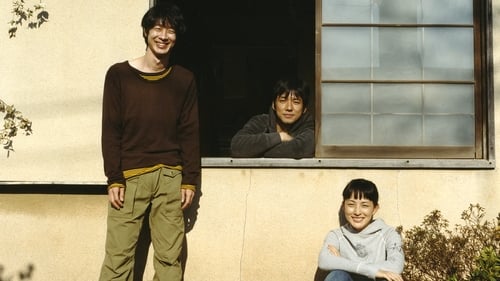
Director of Photography
A salaryman debates selling his grandfather's land to pay off his father's debt.

Director of Photography
"Shadow of Sand" - Set in Tokyo in the 1980's. Yukie, a young woman lives with the vision of the lover she has murdered. After his death he continues to appear in her room. Yukie maintains her usual life, trying to avoid discovery of her crime until a new lover turns up.
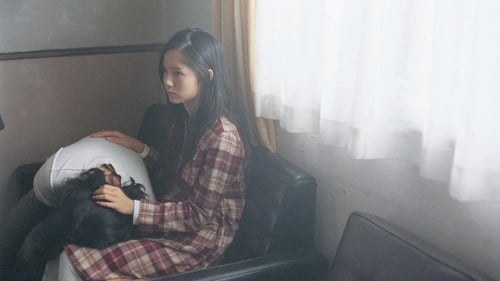
Director of Photography
중국으로부터의 밀항자 인수를 돕던 켄지(아사노 타다노부)는 배 안에서 아버지를 잃은 소년 아춘을 돌보기 위해 그를 데리고 도망친다. 켄지는 5살에 어머니로부터 버림받고, 충격으로 정신병을 앓던 아버지가 자살한 불우한 과거의 소유자. 11년 전, 살인사건에 휘말린 소꿉친구 야스오의 동생 유리(츠치 카오리)와 함께 살고 있다. 지적 장애자인 유리 그리고 순수한 아춘과의 생활은 켄지에게 이전엔 맛볼 수 없었던 안정감을 안겨주었다. ‘마미야 운송’이라는 작은 운송회사엔 다양한 과거를 안고 있는 사람들이 모여있다. 버스납치사건의 피해자인 코즈에(미야자키 아오이). 사채업자에게 쫓기고 있는 고토(오다기리 죠), 자격을 박탈당한 의사등 하나같이 타인에게 일정한 거리를 두고 살고있는 사람들. 그러던 어느 날 운명이 이끄는 것처럼 켄지는 ‘마미야 운송’의 사장의 대리운전을 맡게 된다. 차를 몰고 ‘마미야 운송’에 도착한 켄지는 그곳에서 5살에 자신을 버린 어머니(이시다 에리)와 만나게 되는데…

Camera Operator
"AA" is a documentary about Akira Aida (mostly known as Aquirax Aida), a japanese music critic who introduced free jazz, improvisation, and progressive rock to Japan. It's based on interviews with 12 critics and musicians who had connections with him. This is a documentary that considers the past, present and future of improvisation.

Director of Photography
Kaoru, a wealthy woman whose youth is fading, abandons the hustle and bustle of the city to live a peaceful life in a house on the coast. There she takes care of an old deaf, dumb and blind man as if he were an insect, a child or a pet. He can’t do anything for himself, so she feeds him and accompanies him on his walks. This strong mutual dependency offers Kaoru an escape from society and allows her to free herself from restrictions imposed by common sense.
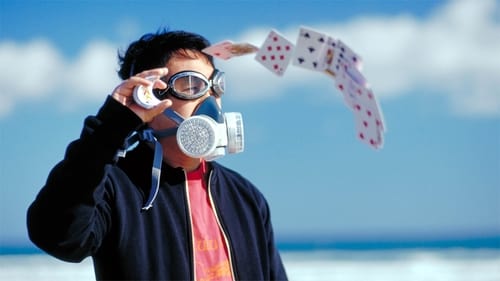
Director of Photography
A.D. 2015: A virus has been spreading in many cities worldwide. It is a suicidal disease and the virus is infected by pictures. People, once infected, come down with the disease, which leads to death. They have no way of fighting against this infection filled with fear and despair. The media calls the disease the "Lemming Syndrome".
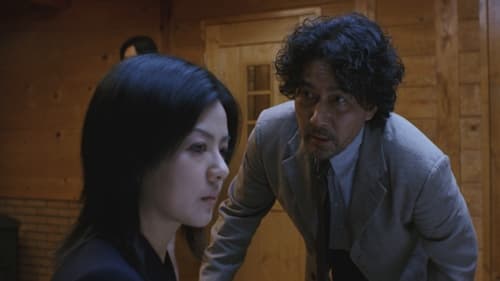
Director of Photography
니키마는 중학교 입학 시험을 앞둔 딸을 위해 호숫가에 있는 사교육 시설에 들어간다. 세 아이와 그들의 부모는 몇달 동안 시험공부에 몰두하거나 뒷바라지를 하게 될 것이다. 그러나 첫날밤, 니키마를 찾아온 그의 애인이 니키마의 아내와 다투다가 오두막에서 살해당한다. 시체를 앞에 둔 부모는 아이들 공부에 방해가 되지 않도록 입을 다물고 증거를 없애기로 한다.
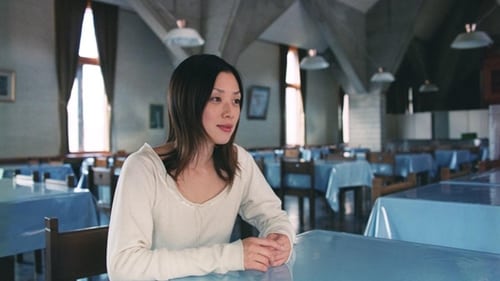
Director of Photography
Private detective Mike takes on an assignment to return a girl, who is set to marry into a prestigious family, from a mysterious commune in the forest.
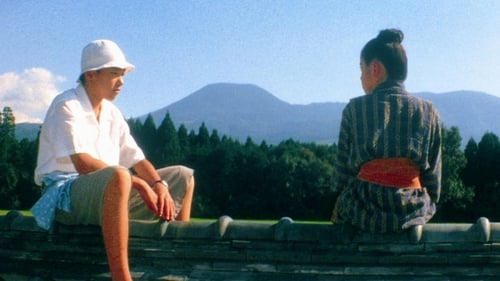
Director of Photography
Commencing well-respected Nippon director Kazuo Kuroki's sixth decade behind the camera, "A Boy's Summer in 1945" (literally "A Beautiful Summer in Kirishima") is a lyric, novelistic drama set in the countryside in the last days before Japan's surrender ending WWII. Striking a welcome retro note in its languid pacing and delicate handling of seriocomic ensemble threads, handsome production is a natural for fests. It might also prove a cornerstone for retrospectives or ancillary releases of works by a helmer ("Preparation of the Festival," "Ronin-gai") who's long been appreciated at home but has won just limited attention abroad.

Director of Photography
The ostensible subject of this film is the growing, drying, peeling and packaging of persimmons in the tiny Japanese village of Kaminoyama. The inhabitants explain that it is the perfect combination of earth, wind and rain that makes their village’s persimmons superior to those grown anywhere else, including the village just a few miles away. The film’s larger subject, however, is the disappearance of Japan’s traditional culture, the end of a centuries-old way of life.

Director of Photography
Kenji Nakagami, one of the most notable Japanese writers of the post-war, died in 1992. His work reveals a strong connection to his homeland, Kishu: a mountainous region that connects to the Pacific Ocean through a river. "To The Alley" (alternative title) is a documentary about Kenji's life. Incorporating 16 mm images from the writer's personal archive and adding new footage, director Shinji Aoyama travels through the paths of the life and art of the Japanese writer.

Director of Photography
A successful businessman and his alcoholic wife attempt to piece together their unhappy lives and shattered marriage. Little do Nagai and Akira know that their precarious relationship will soon be transformed by a stranger, the enigmatic Keechie.
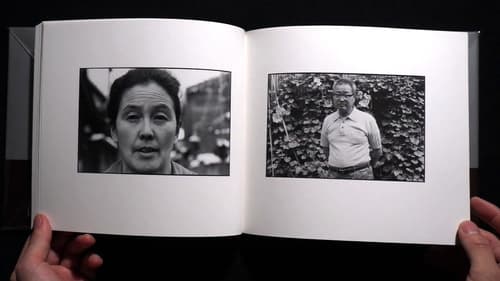
Director of Photography
36세의 나이로 세상을 떠난 사진작가 고초 시게오(1946~1983)는 자신만의 독특한 관점과 테마가 담긴 『자아와 타자』(1977) 등 여러 사진집을 발표했다. 사토 마코토 감독은 고초 시게오가 남긴 여러 작품을 스크린으로 불러내 그의 세계를 탐구하는 한편, 촬영감독 다무라 마사키와 함께 고초 시게오의 발길이 닿았던 풍경을 찾아가 그를 추억한다.

Director of Photography
큐슈의 어느 지방 도시의 버스 운전사인 사와이는 버스 납치 사건 현장에 우연히 있다가 구사일생으로 목숨을 건진다. 인질로 잡혔다가 사와이와 함께 살아남은 사람은 중학생인 나오키와 초등학생인 코즈에 남매. 세 사람은 사건이 아니라 언론과 주변 사람들의 무분별한 호기심때문에 더 큰 상처를 받는다. 사와이는 가족을 버리고 남매 역시 세상을 떠나 스스로 자신을 지키려고 한다. 7년 후, 남매는 단 둘이 살고 있고 사와이가 이 마을에 오면서 연쇄살인이 일어난다. 때마침 찾아온 사와이가 유력한 용의자가 되고 이에 괴로워하던 사와이는 남매의 집으로 들어오면서 세 사람은 기이한 가족이 되어 가는데.

Director of Photography
Rika, a bright, attractive, and driven young woman, is intent on marrying her dreamy boyfriend Seiichi Ono who is not only tall and handsome but also an up-and-coming executive. One day, Ono abruptly dumps her.

Director of Photography
Japanese drama set in a southern Kyushu island where dance-troupe leader Shinji (Shinji Arano) stays on as his touring troupe departs. After Shinji moves in with an old man (Nobuyoshi Tanigawa) cared for by his granddaughter (Reiko Matsuo), he becomes an apprentice to the old man's construction of a wooden boat
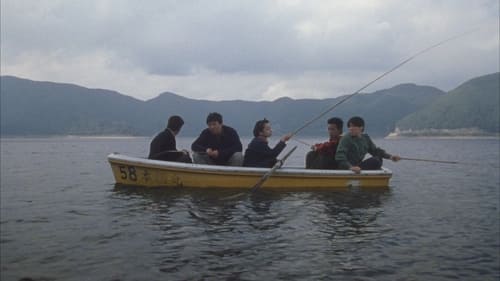
Director of Photography
6년전 유괴범에게 딸을 잃은 니이지마는 유괴범에게 복수를 결심하고 납치한다. 유괴범은 자신에게 죄가 없다고 결백을 주장하지만, 니이지마는 복수를 하기 위해 총을 구한다. 그러던 그에게 야쿠자의 청부살인을 하는 회사를 경영하는 이와마츠가 함께 일할 것을 제안한다. 이미 감정이 식어버린 니이지마는 이와마츠와 손을 잡고 청부살인을 일을 시작하게 되는데...
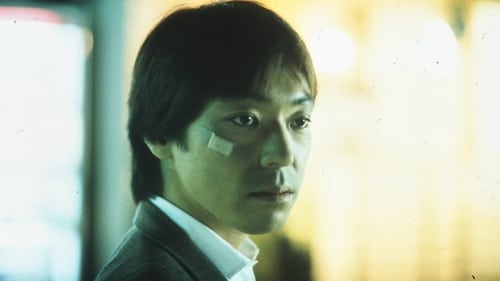
Director of Photography
Miyashita, a former low-level yakuza member, has tracked down and kidnapped his daughter's murderer with help of his friend Nijima. But others are soon implicated in the death, leading the pair further down a violent path of revenge.
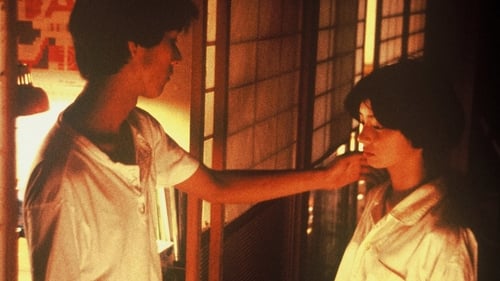
Director of Photography
타하라 코조는 어머니와 아내, 조카인 에이스케, 딸 미치루를 데리고 나라현 남부의 작은 산골 마을에서 농사를 지으며 살고 있다. 경기 불황이 어려워진 집안 살림에 보탬이 되려고 타하라의 아내는 조카 에이스케가 일하는 공장에서 일을 시작하고 에이스케에게 연정을 품고 있던 미치루는 엄마와 에이스케 사이를 질투하기 시작하는데…

Director of Photography
부티크에서 일하는 유는 애인 케이와 함께 산다. 케이는 배우이긴 하지만, 사실상 실업 상태로 모든 것을 유에게 의존한다. 어느 날, 케이가 유에게 이제 결혼하자고 하는데, 갑작스러운 청혼에 유는 케이의 진심이 무엇인지 알 수 없어 불안하다. 케이가 폭력적으로 변하자 두 사람의 관계는 무너지기 시작하고, 마음에 상처를 입은 유는 결국 집을 나가고 만다. 주로 TV 쪽에서 활동하던 스와 노부히로의 장편 데뷔작. 시나리오에 의존하기보다는 촬영 현장에서 배우들의 즉흥 연기에 모든 것을 맡겼다고 한다.
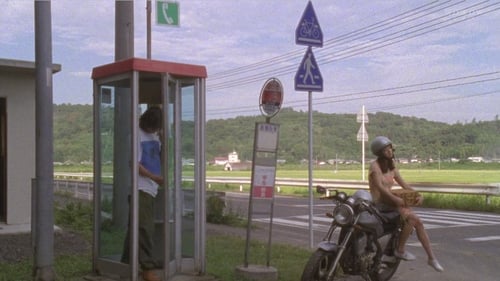
Director of Photography
"유레카"로 깐느 심사위원상을 수상한 아오야마 신지 감독의 첫 데뷔작. 출옥한 야쿠자 보스가 고향으로 돌아와 자신을 배반한 사람들을 차례로 살해하며 세상을 떠난 아버지의 그림자를 쫓는다. 장애자 여동생을 돌보는 친구 아사노 또한 아버지의 죽음을 맞게 되는데. 90년대 일본 젊은이들의 허무감과 절망감을 표현한 영화로 "유레카"를 떠올리게 하는 아오야마 신지의 초기 걸작이다. 아버지 또는 국가라는 존재가 젊은이에게 남긴 것이 무엇이며, 거기에서 도주하는 것이 어떠한 것인가에 대한 감독의 문제의식이 투영되어 있는 작품.

Director of Photography
Three brothers, their father missing and tensions boiling, gather at their rural summer house; soon enough, they're unexpectedly joined by a female cousin.

Director of Photography
Resulting pic blurs the line between documentary and fiction as Yanagimachi explores the lives of a couple of groups of peddlers, and they appear to act out their personal dramas for the camera.

Director of Photography
하야시 가이조 감독의 세 번째 작품으로, 최초 컬러 작품이다. 에도 시대 초기를 무대로 검객, 여도적, 닌자군단이 뒤엉켜 '황금의 나라'를 둘러싸고 항쟁을 벌이는, 전기(傳寄)이야기의 제맛을 충분히 다룬 장대한 스케일의 칼싸움 영화이다. 그러나 시대극의 기량과 스타성 모자라는 배우나 스탭에 익숙하지 못해서 그런지 불만족스러운 결과로 끝나고 말았다.

Director of Photography

Director of Photography
A magical realist story of the legendary Okinawan hero Untamagiru participating in efforts to form an independent Okinawa before the island was returned to Japan in 1972.

Director of Photography
방송 리포터인 나미에게 비디오 테잎이 배달되는데, 테잎에는 한 여자를 난도질해 죽이는 일종의 스너프 필름이었다. 이에 그녀는 시청률을 위해 동료들을 데리고 비디오에서 보여지는 영상을 따라 그 살육의 현장으로 찾아가는데...

Director of Photography
The movie compiles footage taken by Ogawa Production for a period of more than ten years after the collective moved to Magino village. Unique to this film are fictional reenactments of the history of the village in the sections titled "The Tale of Horikiri Goddess" and "The Origins of Itsutsudomoe Shrine". Ogawa combines all the techniques that were developed in his previous films to simultaneously express multiple layers of time—the temporality of rice growing and of human life, personal life histories, the history of the village, the time of the Gods, and new time created through theatrical reenactment—bring them into a unified whole. The faces of the Magino villagers appear in numerous roles transcending time and space—sometimes as individuals, sometimes as people who carry the history of the village in their memories, sometimes as storytellers reciting myths, and even as members of the crowd in the fictional sequences.

Director of Photography
Chief Detective KIMURA Denbei, fondly referred to as Smoky Denbei, is a legendary figure at the Metropolitan Police Department. Transferred to Denbei's Criminal Investigation Division 1, Detective KUMADA Tomekichi arrives from the Toyama Prefectural Police. KUMADA is disconcerted by Denbei's position that murderers nowadays do not need a plausible motive, but gradually adapts to Denbei's unusual methods of investigation.
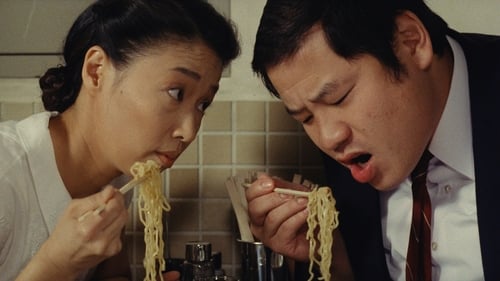
Director of Photography
트럭운전수 고로와 그의 조수는 라면이야기를 하다 잠시 트럭을 세우고 라면집으로 들어간다. 그곳은 바로 담뽀뽀가 혼자 꾸려가는 라면집 '라이라이'다. 담뽀뽀는 물이 끓지도 않는데 면을 집어넣고 라면을 끓이고, 적당히 먹고 일어서려던 고로는 담뽀뽀를 연모하는 패거리들과 싸움이 붙는다. 그것이 인연이 되어 담뽀뽀는 고로에게 라면 스승이 되어달라고 간청하고 고로는 담뽀뽀를 도와주기로 한다. 이들은 아침마다 운동을 해 체력을 키우기도 하고, 라면집을 순회하며 미각을 강화시키는 것은 물론, 경영전략을 익히기도 한다. 면발을 연구하기 위해 쓰레기통을 뒤지고, 몰래 남의 라면 국물 비법을 훔쳐보기도 하는 등 갖은 노력끝에 담뽀뽀는 점점 자신만의 라면을 만들어 가는데...

Director of Photography
평화롭던 시골 마을에 해양공원 건설이 계획되자 그 이권을 둘러싸고 마을이 동요하면서 벌목꾼들과 어부들의 대립은 점점 강도를 더해가기 시작하는데...
개발을 둘러싼 다툼을 그린 사회파 드라마에서 한 발짝 더 내딛어 자연과 종교에 대한 거대 담론까지를 품고 있는 문제작

Director of Photography
고바야시 가족 일가가 교외의 작은 마을로 이사 온다. 소심하지만 가족을 사랑하는 아버지의 20년간의 노력으로 교외에 작은 개인주택을 갖게 된 것이다. 온 가족이 감격에 젖어 있던 어느 날, 형의 집에서 쫓겨난 할아버지가 찾아온다. 할아버지와 단란한 한때를 보내던 가족들은 점차 그의 존재를 귀찮게 여기기 시작하고, 평온하던 가정에 조금씩 균열이 생긴다.
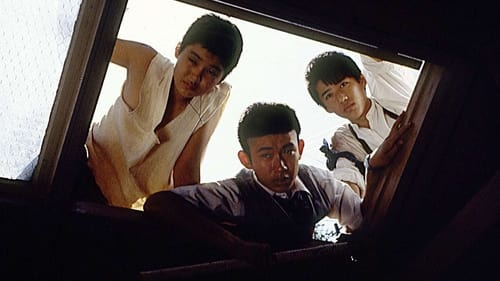
Director of Photography
세 명의 말썽꾸러기 조조, 지쇼, 브루스는 동급생 데부나가에게 괴롭힘을 당하는 중이다. 그런데 어느 날 학교 주차장에서 데후나가가 야쿠자에게 유괴 당하는 현장을 목격한 뒤 데부나가를 구하기 위해 길을 나선다. 그리고 이 이상한 여행 과정에서 야쿠자, 부패 경찰, 선생님 등과 복잡한 관계에 놓인다.

Director of Photography
오가와가 과학영화를 만들어 자기 본래의 자리로 돌아왔을 때, 그는 일본의 국가와 마을에 관해 생각해 볼 장소를 발견하였다. 일본 산하의 심장부를 전체적으로 조망하면서 오가와는 여전히 아이들을 도시로 피신시키면서 전쟁의 소용돌이와 생존을 위한 투쟁을 하고 있는 마을, 후루야시키 마을을 발견하였다. 이 다큐멘터리는 후루야시키 마을을 담고 있다.

Director of Photography
A college student has an affair with a married, middle-aged teacher.

Director of Photography
Yukio is an ex-farmer working as a dump-truck driver in Kashima. Haunted by the drowning of his two young sons, whose names he has had tattooed on his back in penance, and locked in a sibling rivalry with his traditional but urbane younger brother who lives in Tokyo, Yukio has become an amphetamine-addicted loner at odds with his family, friends and colleagues.

Director of Photography
This rural documentary features poet Jin Makabe. Thoughts about agriculture, memories, landscapes.

Director of Photography
This biopic is centered on New Year's Day of 1894, when Kitamura is recovering from a suicide attempt. Japan is then under the spell of fervent patriotism because the government wants to build up public support for a war with China. Kitamura's literary friends and militant comrades come to visit. They wonder why Kitamura wants to kill himself. Kitamura at first refuses to receive them, then he sits down with them and looks back on his days as a civil rights militant, his stormy love life and his ardent but destructive desire to live literature to the full.

Director of Photography
In the mid-1970s, protests were waning across Japan after the Red Army scandal of Asama Cottage. In Sanrizuka, people were weary of the violence and the airport was well under construction. As for Ogawa Productions, they invited criticism by pulling out and moving to a quiet village in northern Japan. But when protesters back in Sanrizuka erected a tall tower at the end of one runway, they sent a crew to document what happened. This became the final film of the Sanrizuka Series.

Director of Photography
Omnibus about three actresses from different generations

Director of Photography
료마는 막부 쪽의 자객에게 저격 대상이 된 것뿐만 아니라 근황의 주류파들에게도 저격 대상이 된다. 1867년 11월 새로운 정치를 세워야 한다는 킨노파와 현 권력을 유지하고자 하는 사바쿠파의 일대 충돌이 일어나는데, 료마는 킨노파에 속해있다. 그리고 료마는 우연히 알게 된 여자 반이 사바쿠파의 테러 그룹인 신센구미의 멤버인 토미타 사부로의 여자인 것도 모른채 친하게 지낸다.

Director of Photography
1873년 메이지 시대의 일본. 시마네현 코이치 마을이라는 시골 마을의 교사가 된 남편 고와 함께 어린 아들 시로를 데리고 가던 카시마 사요는 3명의 남자들과 1명의 여자에게 공격당해 남편과 아들은 잔인하게 살해당하고 자신은 처참하게 윤간, 폭행을 당한다. 자신을 끌고 갔던 쇼케이 도쿠이치를 죽이고 나머지를 찾아 다니다가 붙잡혀 살인 혐의로 수감된 그녀는 남은 자들에게 복수하기 위해, 그리고 그 복수를 실현시켜줄 아이를 낳기 위해 닥치는 대로 간수들을 유혹하여 관계를 가진다. 그 결과 유키(雪)라는 딸을 낳은 그녀는 난산으로 인해 죽게 된다. 복수를 위해 아이를 키워달라는 사요의 유언을 기억하던 감방 동기들 중 하나이며 아이를 받아주었던 미카즈키 오토라에 의해 유키는 무사출신의 승려인 도카이(道海)로부터 검술을 배우고 20세가 되었을 때에 복수의 화신으로 어머니의 원수들을 하나하나 처리하기 시작한다. 코이치 마을 출신인 거지집단의 두목 마츠에몬의 도움을 받아 나머지 세 명의 행방을 수소문하게 된다

Director of Photography

Director of Photography
Shinsuke Ogawa documentary about the life of the farmers in Heta Village opposing their resettlement due to the construction of Narita Airport.

Director of Photography
The third film in Ogawa Productions’ Narita/Sanrizuka series of documentaries about the resistance by farmers and activists to the construction of the Narita Airport.

Director of Photography
It's the mid 60s. Tokyo needs a new airport. There isn't anywhere in Tokyo to put it, so the government decides on displacing some adjacent villages. The peasants of these villages are not having it. What results is a remarkable act of protest and civil disobedience.

Director of Photography
In 1968 the plan by the government to construct a new international airport in the fields of Sanrizuka near Tokyo unleashed one of the most important and enduring social upheavals in the history of postwar Japan. The plan sought to evict thousands of farmers from their lands without any sort of respect for the locals’ rights. Their resistance to eviction was met with extreme violence by the police. Activists from all over the country, including thousands of students, joined with the farmers in their mounting struggle. As the combats in Sanrizuka became more intense and the numbers of police increased, the collective became more involved in the fighting. Sanrizuka: The Three Day War was what Ogawa called a “bullet film”, an immediate and powerful piece of agitprop shot in three days and intended to be seen as quickly and widely as possible. Credit: ICA London

Director of Photography
수백년을 이어져 내려온 마을이 공항 건설이라는 당면 과제 앞에서 철저하게 파괴된다. 농민들은 말한다. "낡은 인간관계는 백지가 되었다. 새로운 인간관계를 만들어야 한다"고. 신공항 건설 반대 투쟁은 근원적인 인간의 문제를 제기한다. 피를 나눈 형제가 찬성파가 되어 분열하고 갈등한다. 농민들 한 가운데에 선 카메라는 긴장감을 가지고 촬영은 계속한다.

Director of Photography
In 1968, Ogawa decided to form Ogawa Productions and locate it at the newly announced construction site of Narita International Airport in a district called Sanrizuka. Ogawa chose to locate his company in the most radical of the villages, Heta. Some farmers immediately sold their land; others vehemently protested and drew the support of social movements across the country. Together they clashed with riot police sent in to protect surveyors, who were plotting out the airport. Summer in Sanrizuka is a messy film – its chaos communicating the passions and actions on the ground.

































